Chinese noodle dishes form an integral part of the country's diverse cuisine, offering a spectrum of flavors, textures, and regional variations. From hand-pulled noodles to springy egg noodles, each dish embodies a unique combination of ingredients and cooking techniques, reflecting the cultural diversity of China's vast culinary landscape. Whether it's the fiery heat of Sichuan dan dan noodles or the comforting warmth of Cantonese wonton noodle soup, prepare to be transported on a gastronomic adventure unlike any other.
Chow Mein
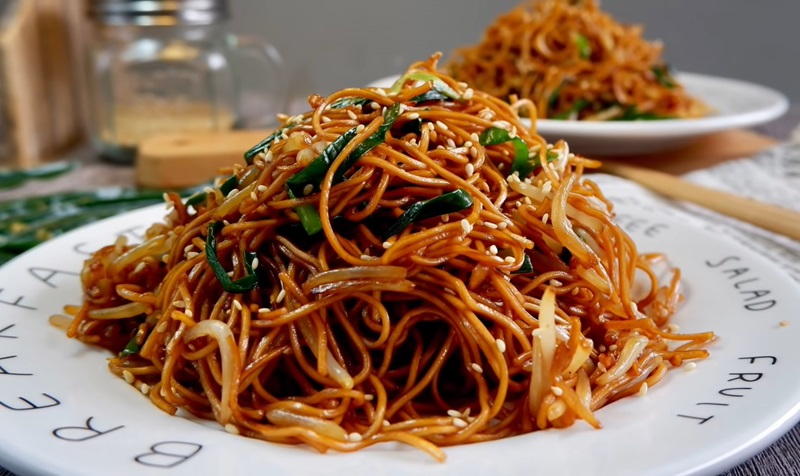
Chow Mein is a popular Chinese noodle dish that is known for its delicious combination of stir-fried noodles, vegetables, and protein. The dish typically features thin egg noodles, which are cooked until they're slightly crispy on the outside and tender on the inside. The noodles are then tossed in a flavorful sauce made from a mixture of soy sauce, oyster sauce, and various seasonings. This sauce adds a savory and umami-rich flavor to the dish. Chow mein also includes an assortment of vegetables, such as cabbage, carrots, bell peppers, and bean sprouts. These vegetables not only add color and crunch to the dish but also provide a healthy and nutritious element. In addition to vegetables, Chow mein can also be prepared with different types of protein, including chicken, beef, shrimp, or tofu. The protein is usually marinated and stir-fried separately before being combined with the noodles and vegetables.
Jajangmyeon
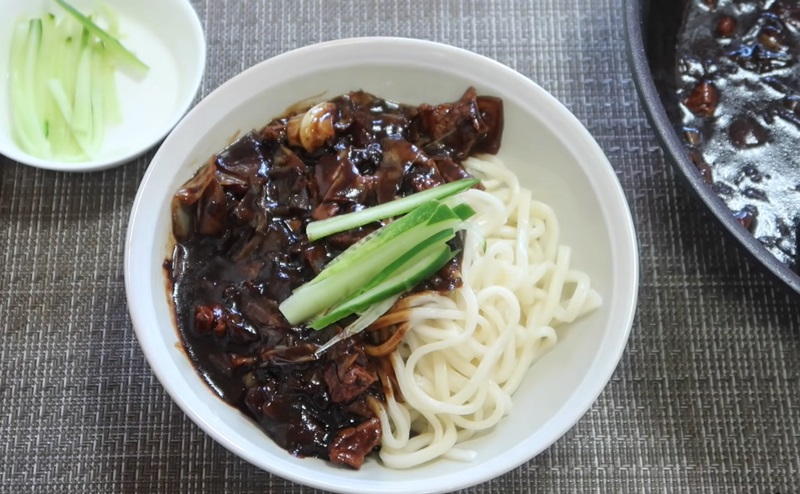
Jajangmyeon is a popular Chinese-Korean noodle dish. The dish consists of thick, wheat-based noodles topped with a thick black bean sauce made from fried chunjang (black bean paste), diced pork or beef, and a variety of vegetables such as onions, potatoes, and zucchini. The black bean sauce is the star of the dish, providing a rich and savory flavor that coats the noodles perfectly. The combination of the chewy noodles and the deliciously sweet and savory sauce creates a harmonious balance of flavors that is both comforting and satisfying. Jajangmyeon is often enjoyed with a side of tangsuyuk (sweet and sour pork) and pickled radish.
Char Kway Teow
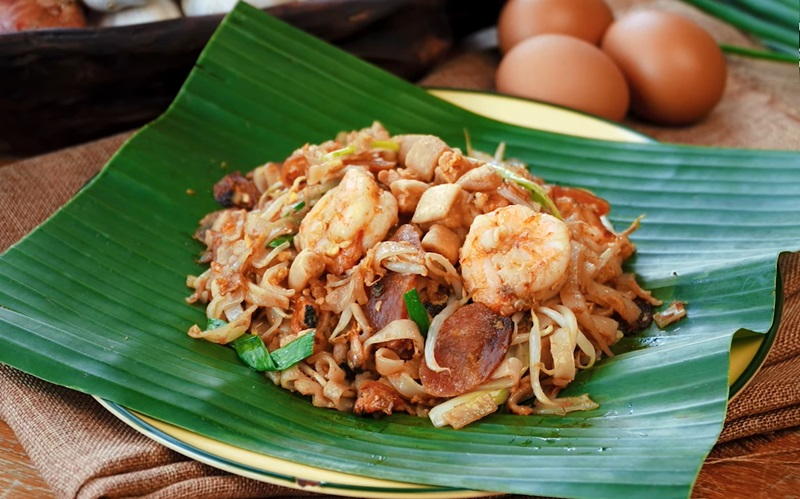
Char Kway Teow is a popular Chinese noodle dish that has gained immense popularity worldwide. This delicious dish is made with flat rice noodles stir-fried with a combination of ingredients that create a perfect balance of flavors and textures. The main ingredients typically include shrimp, sliced Chinese sausage, eggs, bean sprouts, and chives, all stir-fried in a wok with dark soy sauce, light soy sauce, and chili paste. The noodles are cooked until they have a slightly charred and smoky flavor, giving the dish its unique taste. Char kway teow is known for its savory and slightly sweet taste, with a hint of spiciness from the chili paste. The combination of ingredients creates a medley of flavors that is both satisfying and addictive. The dish is often garnished with fresh cilantro and served with a side of lime for an added burst of freshness.
Dandan Noodles
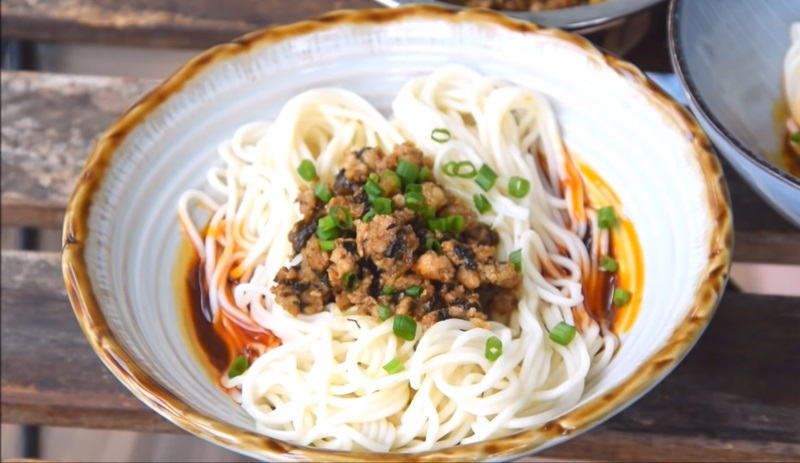
Dandan Noodles, also known as Dandanmian, is a popular Chinese noodle dish originating from Sichuan province. This flavorful and spicy dish is named after the traditional carrying pole (dandan) that street vendors used to sell the noodles. Dandan noodles typically consist of thin wheat noodles, tossed in a rich and aromatic sauce made from chili oil, soy sauce, Sichuan peppercorns, and minced pork. The dish is then garnished with chopped scallions, crushed peanuts, and sometimes pickled vegetables, adding layers of texture and flavor. The combination of the fiery chili oil and numbing Sichuan peppercorns creates a unique and addictive sensation known as "ma la," which is a hallmark of Sichuan cuisine. The minced pork adds a savory element to the dish, perfectly complementing the spiciness. Dandan noodles can be customized to suit different palates, with variations that include adding additional ingredients like bok choy, mushrooms, or even seafood.
Lo Mein
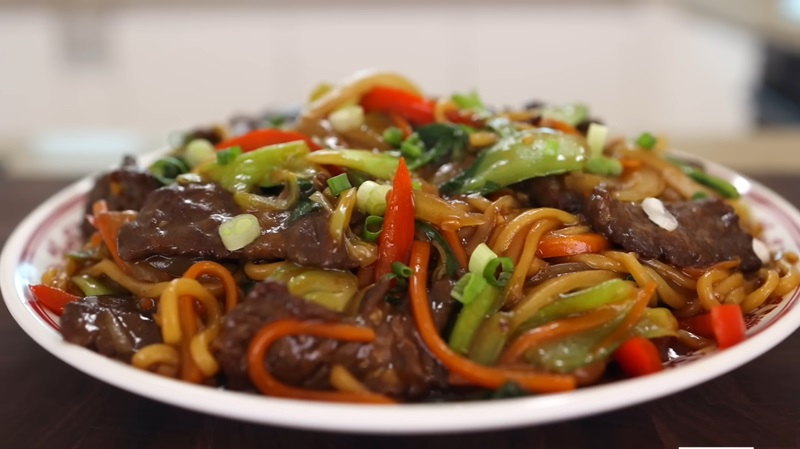
Lo Mein is a popular Chinese noodle dish that is enjoyed all over the world. It is a versatile and flavorful dish that can be customized with various ingredients to suit different tastes. The dish typically consists of stir-fried noodles made from wheat flour, which are then tossed with a variety of vegetables, protein (such as chicken, beef, or shrimp), and a savory sauce. The noodles used in lo mein are soft and chewy, providing a satisfying texture. The vegetables used in the dish can vary, but commonly include carrots, broccoli, bell peppers, and mushrooms. The protein is usually thinly sliced and cooked alongside the noodles, adding both flavor and substance to the dish. The sauce used in lo mein is a key component that brings all the flavors together. It is typically made from a combination of soy sauce, oyster sauce, sesame oil, and various seasonings, giving the dish a rich and savory taste.
Luosifen
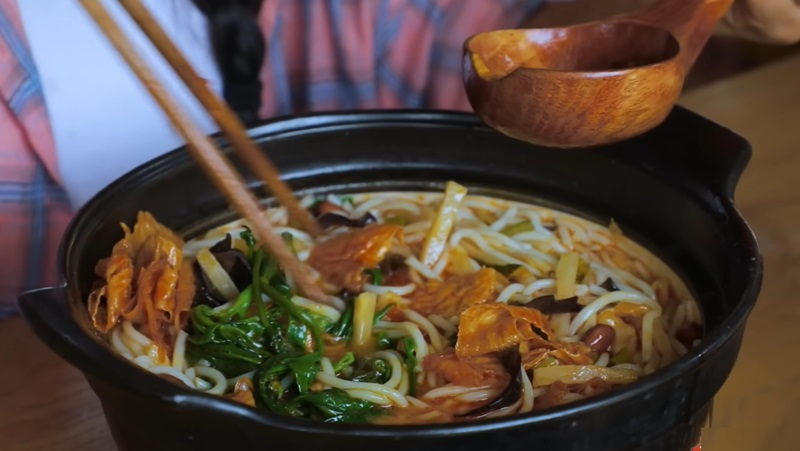
Luosifen is a popular Chinese noodle dish that originates from the city of Liuzhou in Guangxi province. This unique and flavorful soup dish is made with river snails, rice noodles, and a variety of spices and herbs. The dish gets its distinct taste from the combination of ingredients such as pickled bamboo shoots, peanuts, dried tofu, and fresh vegetables. The star of the dish, the river snails, are cleaned thoroughly and then simmered in a rich and aromatic broth. The broth is made by boiling pork bones, dried shrimp, and various spices to create a flavorful base. The rice noodles are cooked separately and then added to the broth along with the snails and other ingredients. Luosifen is known for its spicy and sour taste, which comes from the addition of chili peppers and fermented bamboo shoots.
Zhajiangmian
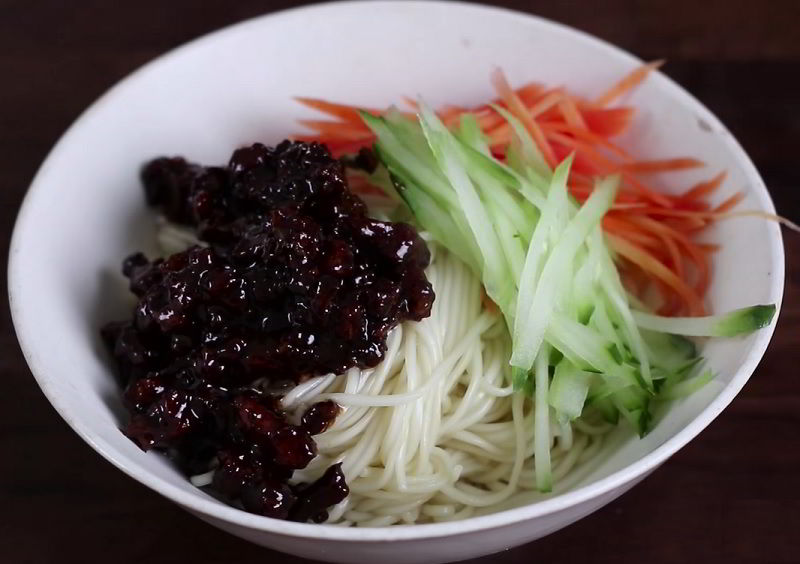
Zhajiangmian, or 'fried sauce noodles', stands out as a classic and renowned dish in Beijing cuisine. This flavorful dish involves cooking ground pork and onions in a savory brown sauce with a touch of sweetness, then tossing the mixture with noodles and serving it alongside crisp cucumber. Quick and easy to prepare, zhajiangmian is perfect for hot days and convenient for meal prep. The traditional recipe uses a thick, salty soybean paste along with ground pork and occasionally lard, creating a rich and flavorful sauce that requires only a small amount to enhance a whole bowl of noodles.
Wonton Noodles
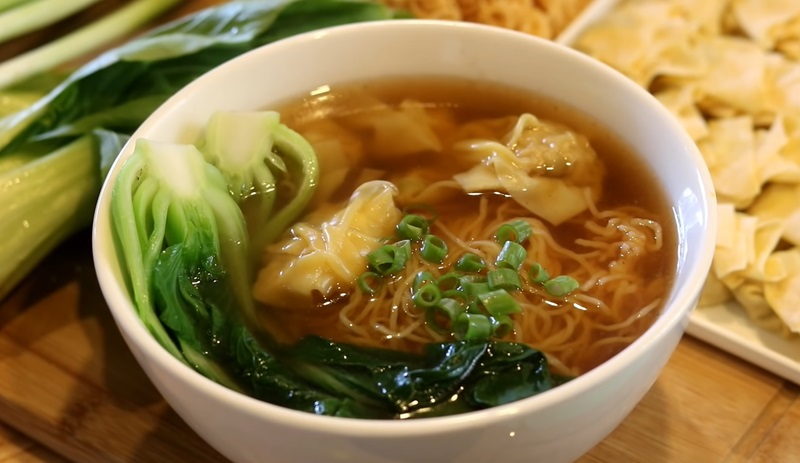
Wonton Noodles are a popular Chinese noodle dish of Cantonese origin. This flavorful and comforting dish consists of egg noodles served in a savory broth, topped with wontons, and accompanied by various garnishes. The star of this dish is the wonton, which is a type of dumpling filled with a mixture of minced meat (usually pork or shrimp) and seasonings. The wontons are traditionally wrapped in a thin dough and then boiled or steamed until they become tender and juicy. The noodles used in this dish are thin and springy, providing a delightful texture that complements the wontons perfectly. The broth is typically made from a combination of chicken or pork bones, soy sauce, and other seasonings, resulting in a rich and flavorful base.
Champon
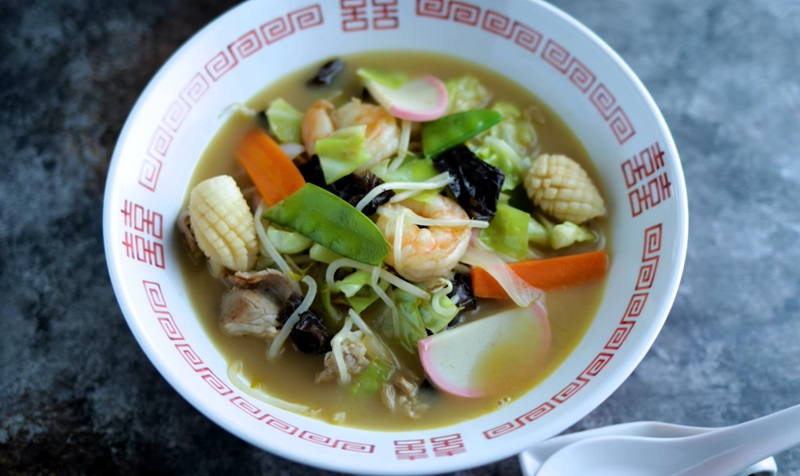
Champon is a delicious and flavorful Chinese noodle dish that originated in Nagasaki, Japan. This dish has its roots in Chinese cuisine, but has been adapted and perfected over the years to incorporate local Japanese ingredients and flavors. Champon is typically made with thick wheat noodles, which are cooked al dente and then combined with a variety of ingredients such as seafood, vegetables, and pork. The noodles are stir-fried with these ingredients in a savory broth, which is seasoned with soy sauce, garlic, and other spices to enhance the overall flavor profile. One of the standout features of Champon is its generous portions of ingredients. It is common to find a wide array of seafood such as shrimp, squid, and fish, as well as vegetables like cabbage, carrots, and bean sprouts.
Beef Chow Fun
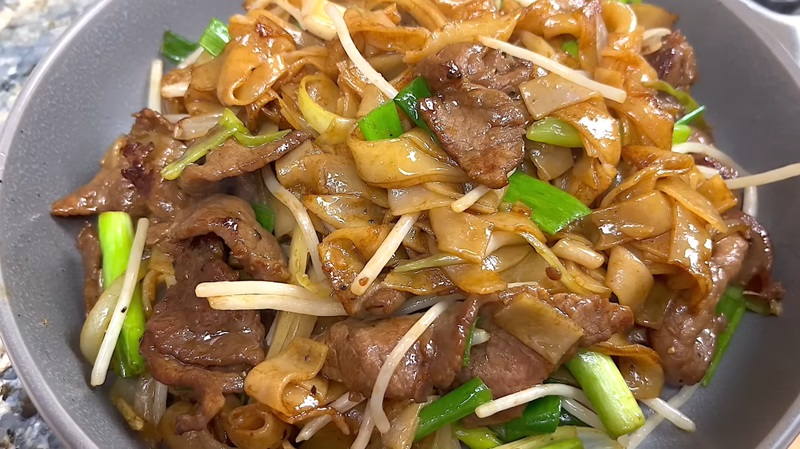
Beef Chow Fun typically consists of wide rice noodles, tender slices of beef, and an assortment of fresh vegetables. The dish starts by stir-frying the beef with garlic and ginger until it becomes tender and flavorful. The wide rice noodles are then added to the wok, along with crunchy bean sprouts, scallions, and sometimes other vegetables like bell peppers or bok choy. The ingredients are tossed together, allowing the flavors to meld and the noodles to absorb the savory sauce. The sauce used in beef chow fun is usually a combination of soy sauce, oyster sauce, and sometimes a touch of sesame oil for added depth of flavor. This creates a rich and savory sauce that coats the noodles and enhances the taste of the beef and vegetables.
Beef Noodle Soup
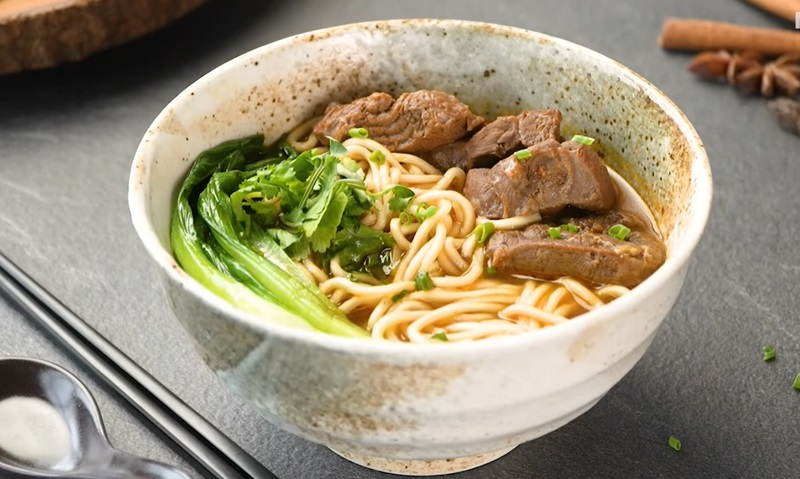
Beef Noodle Soup is a popular Chinese dish that is loved for its rich and hearty flavors. This comforting dish consists of tender beef slices, boiled noodles, and a flavorful broth. The beef is typically marinated in a mixture of soy sauce, ginger, garlic, and other aromatic spices to enhance its taste. The noodles used can vary, but they are usually thick and chewy, providing a satisfying texture to the dish. The broth is the star of the show in this dish. It is made by simmering beef bones, spices, and vegetables for hours, resulting in a flavorful and aromatic soup. The broth is often infused with soy sauce, star anise, cinnamon, and other spices, creating a deeply savory and fragrant base. To serve, the noodles are cooked separately and then added to the bowl along with the tender beef slices. The piping hot broth is poured over the noodles, creating a delicious and comforting bowl of beef noodle soup.
Banmian
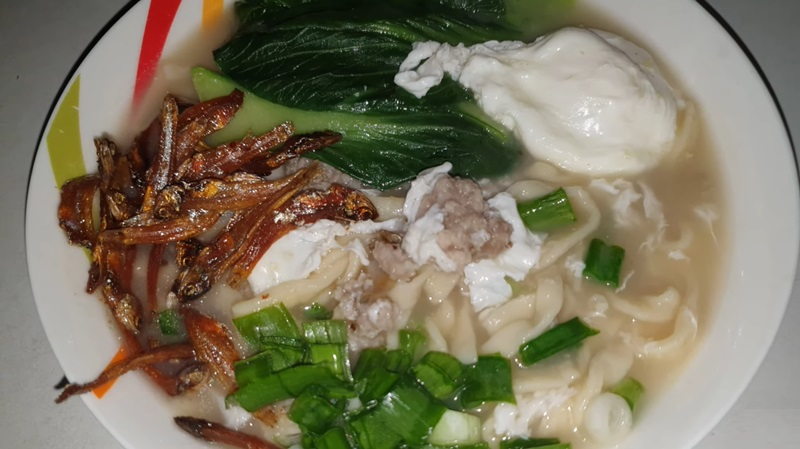
Banmian, also known as "hand-pulled noodles," is a popular Chinese noodle dish that originated in the northern regions of China but has become widely enjoyed throughout the country. It is a simple yet satisfying dish that consists of fresh, handmade noodles served in a flavorful broth with various toppings. The noodles in Banmian are made by pulling and stretching the dough with hands, resulting in a unique texture that is chewy and springy. The broth is typically made from a combination of meat or vegetable stock, soy sauce, and aromatic spices, giving it a rich and savory flavor. Banmian can be customized with a variety of toppings, such as sliced beef, pork, chicken, or seafood, along with vegetables like bok choy, mushrooms, and bean sprouts.
Mee Pok
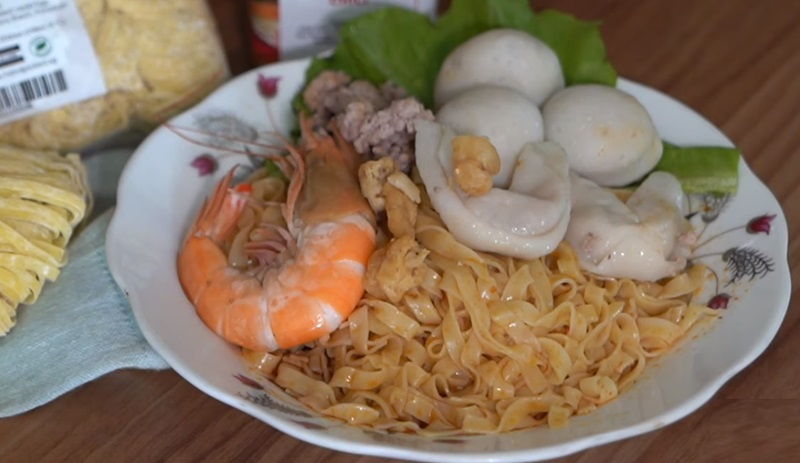
Mee Pok, a popular Chinese noodle dish, originated from the Teochew region of China but has gained popularity worldwide. This delectable dish features flat, yellow noodles tossed in a flavorful sauce with an array of toppings. The star of the dish is the mee pok noodles themselves. These are flat and wide, providing a satisfying chewy texture. The noodles are typically cooked al dente and then tossed in a delicious sauce made from a combination of ingredients like soy sauce, sesame oil, vinegar, and chili oil. This sauce gives the dish its distinct savory and tangy flavor. To enhance the taste and texture, mee pok is often topped with a variety of ingredients. Common toppings include minced pork, fish balls, fish cakes, and crispy shallots. Some variations may also include prawns, sliced pork, or even lard for added richness.
Liangpi
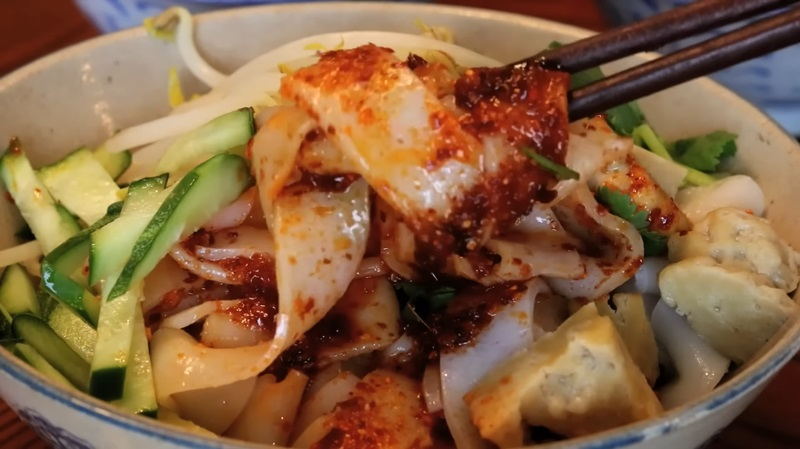
Liangpi, also known as cold skin noodles, is a popular Chinese noodle dish that originates from the Shaanxi province. This dish is made from wheat flour and water, which is kneaded and then rolled into thin sheets. The sheets are then cut into wide, flat noodles and boiled until they are cooked through. Once cooked, the noodles are rinsed in cold water to remove excess starch and to cool them down. Liangpi is typically served cold, which makes it a refreshing and satisfying dish, especially during hot summer days. It is often topped with a variety of ingredients such as bean sprouts, cucumber, shredded chicken, tofu, and cilantro. A flavorful sauce is poured over the noodles, usually made with soy sauce, vinegar, chili oil, garlic, and sesame paste, which adds a tangy and spicy kick to the dish. The combination of the chewy, smooth texture of the noodles, the crunchiness of the vegetables, and the zesty flavors of the sauce make Liangpi a delicious and enjoyable meal.
Crossing-the-bridge noodles
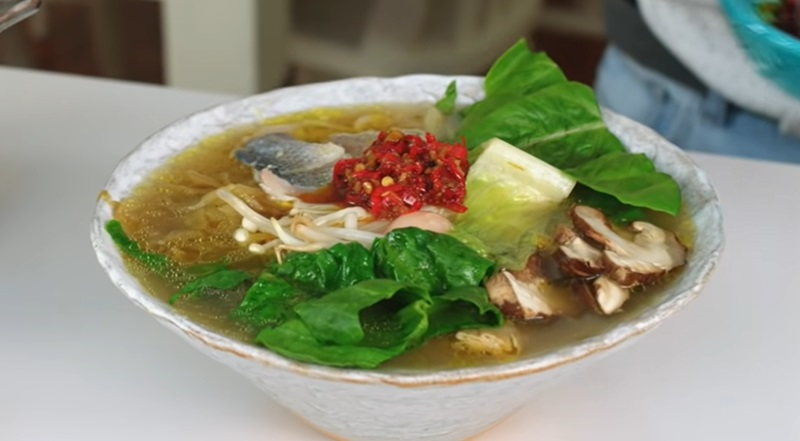
Crossing-the-bridge noodles, or Guoqiao Mixian, is a traditional Chinese noodle dish that originated from Yunnan province. This iconic dish is named after a legend of a scholar who studied on a small island and his wife would prepare the noodles for him to enjoy while they were still hot. The dish consists of a bowl of piping hot chicken broth served with a variety of ingredients. Thin rice noodles are cooked separately and added to the broth along with thinly sliced pieces of chicken, pork, and fish. Other common toppings include bean sprouts, mushrooms, tofu, and scallions. The dish is typically garnished with cilantro and a drizzle of chili oil for added spice. What makes Crossing-the-bridge noodles unique is the order in which the ingredients are added. The noodles are added last, right before serving, to ensure they remain perfectly al dente. This allows diners to enjoy the dish at their own pace, adding the noodles gradually to maintain their ideal texture.
Shanghai Fried Noodles
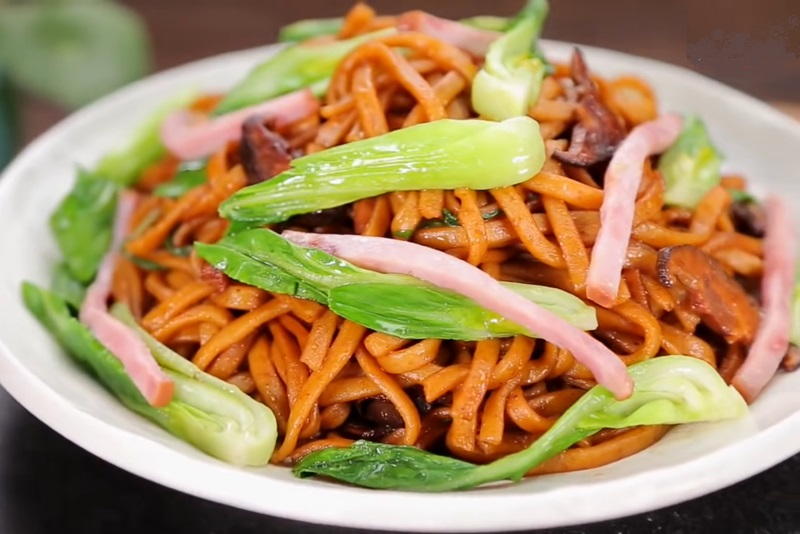
Shanghai fried noodles is a dish made from Shanghai-style noodles. These noodles are commonly stir-fried, often with beef cutlets, bok choy, and onion, or alternatively with pork and Chinese yellow chives. A staple in Shanghai cuisine, this dish is frequently served at dumpling houses, embodying the rich flavors and culinary tradition of the region.
Lor Mee
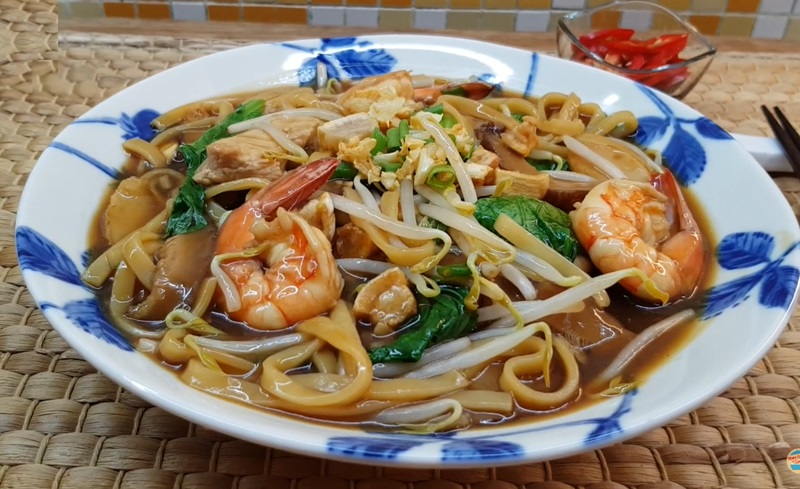
Lor Mee is a popular Chinese noodle dish that consists of thick, flat noodles served in a rich and thick gravy-like sauce. The noodles are typically made from wheat flour and have a chewy texture that adds to the overall enjoyment of the dish. The sauce used in Lor mee is made from a combination of ingredients such as soy sauce, vinegar, garlic, and various spices. It is then thickened with cornstarch to create a velvety and luscious consistency. The sauce is poured over the noodles along with a variety of toppings, which can include braised pork belly, sliced fish cakes, boiled eggs, and bean sprouts. Lor mee is often garnished with chopped scallions and crispy fried shallots, adding a burst of freshness and crunch.
Cart Noodle
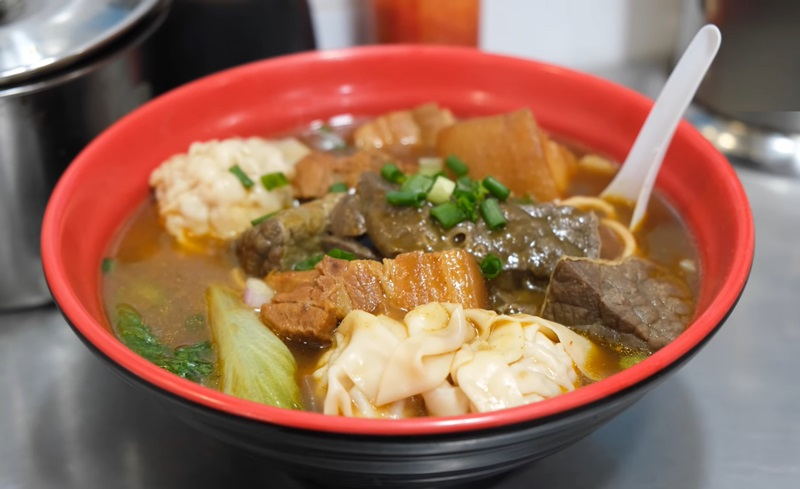
Cart Noodle, also known as daipaidong noodle, is a popular street food dish in Hong Kong that originated from the traditional street vendors who used to sell noodles from carts. It is a customizable noodle dish that allows customers to choose from a wide variety of ingredients and toppings. The base of the cart noodle dish is a bowl of noodles, usually either thin or thick wheat noodles. The noodles are cooked to perfection and then topped with an array of ingredients such as fried tofu, fish balls, beef brisket, pork chops, vegetables, and more. The toppings are often stewed or braised in flavorful broths to enhance the taste and texture. One of the unique aspects of cart noodles is the ability to customize the dish according to personal preferences. Customers can pick and choose their desired ingredients and toppings, creating a personalized bowl of noodles that suits their taste buds.
Ants Climbing a Tree
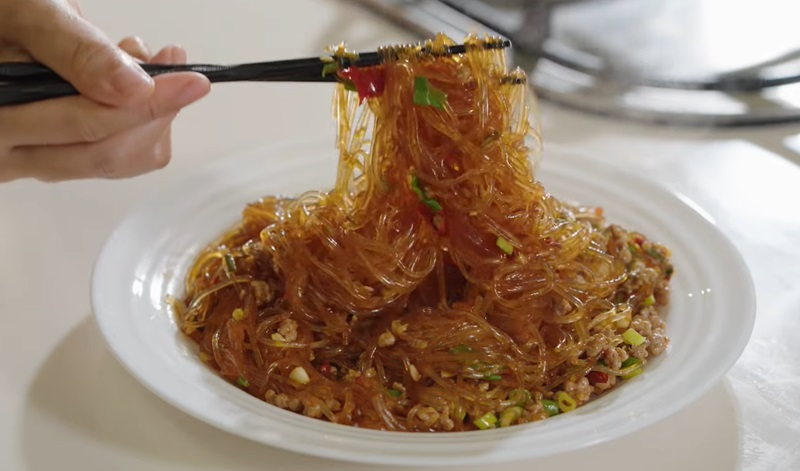
Ants climbing a tree is a traditional Chinese noodle dish that originated from Sichuan province. Despite its peculiar name, the dish does not actually contain any ants or trees. Instead, it consists of vermicelli noodles, ground pork, and a spicy sauce. The vermicelli noodles, resembling tiny twigs, symbolize the tree branches, while the ground pork represents the ants "climbing" up the noodles. The dish gets its spiciness from the Sichuan peppercorns and chili bean paste used in the sauce, which gives it a numbing and fiery flavor. To prepare ants climbing a tree, the vermicelli noodles are first boiled until al dente, then stir-fried with minced garlic and ginger. The ground pork is added and cooked until browned. Finally, the spicy sauce, made from a combination of soy sauce, vinegar, chili bean paste, and Sichuan peppercorns, is poured over the noodles and pork, creating a mouth-watering and savory dish.
Hot Dry Noodles
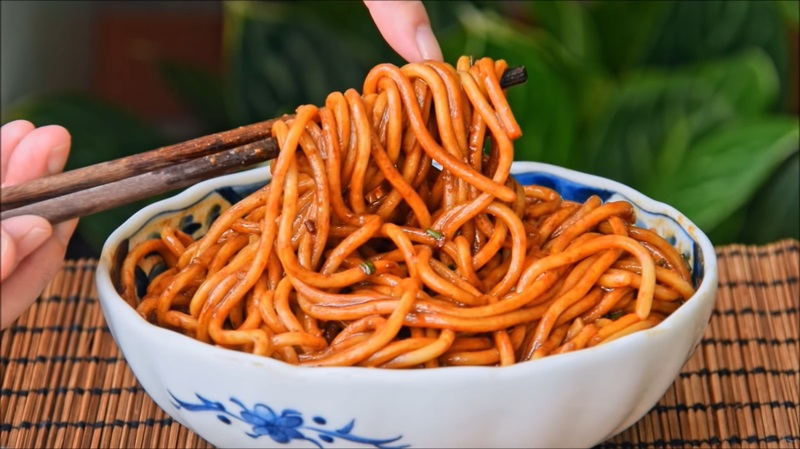
Hot dry noodles, also known as "re gan mian" in Mandarin, is a popular Chinese noodle dish that originates from Wuhan, the capital city of Hubei province. This mouthwatering delicacy is loved for its simplicity and bold flavors. The dish is made using thin wheat noodles that are cooked until al dente and then tossed with a rich and savory sauce. The key to hot dry noodles is the seasoning. The sauce is typically made with a mixture of sesame oil, soy sauce, garlic, chili oil, and vinegar, which gives the dish a perfect balance of spicy, tangy, and umami flavors. The noodles are then garnished with various toppings, such as chopped green onions, toasted sesame seeds, and pickled vegetables, adding texture and additional layers of taste.
Ta-a mi
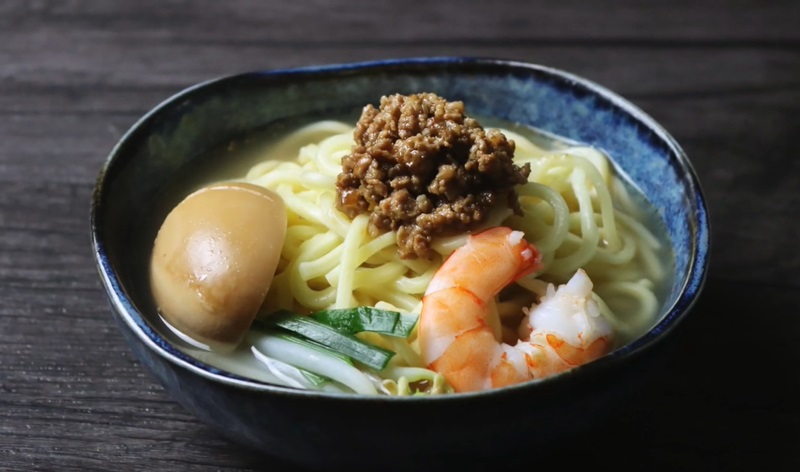
Ta-a mi, also known as "dan dan noodles," is a popular Chinese noodle dish that originates from Sichuan province. It is a flavorful and spicy dish that combines noodles, minced pork, and a variety of seasonings to create a delicious meal. The dish typically features thin wheat noodles that are cooked until they are al dente. The noodles are then topped with a flavorful sauce made from soy sauce, sesame oil, Sichuan peppercorns, and chili oil. The sauce is usually mixed with minced pork that has been stir-fried with garlic and ginger for added flavor. Ta-a mi is known for its spicy kick, which comes from the generous amount of chili oil used in the dish. The heat from the chili oil is balanced by the nutty flavor of sesame oil and the numbing sensation from Sichuan peppercorns. In addition to the noodles and sauce, Ta-a mi is often garnished with chopped scallions, peanuts, and sometimes pickled vegetables to add extra texture and flavors.
Shrimp roe noodles
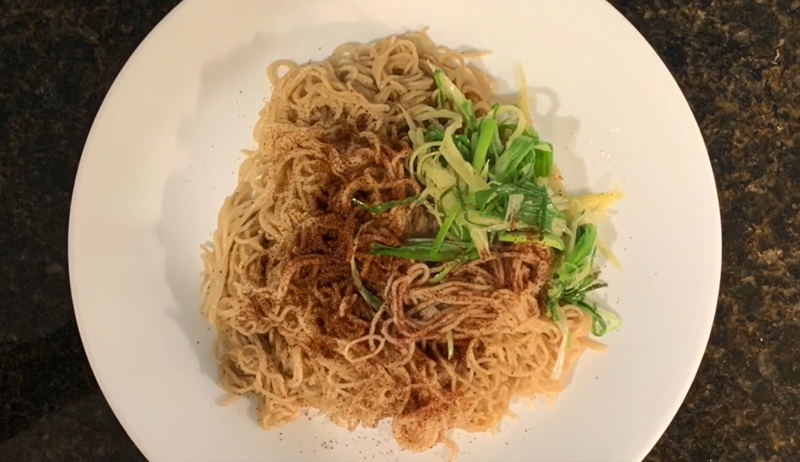
Shrimp roe noodles, popular in Hong Kong and Guangdong, are a distinctive variety of Chinese noodles. Notably, tiny black spots of salty shrimp roe adorn the noodle strips, setting them apart from other types. Comprising wheat flour, salt, tapioca flour, monosodium glutamate (MSG), and shrimp roe, these noodles boast a unique flavor. Typically, they are boiled directly, and while soy sauce or other flavorings can be added, the black dots may disappear depending on the noodle brand after cooking.
Hot and Sour Noodles
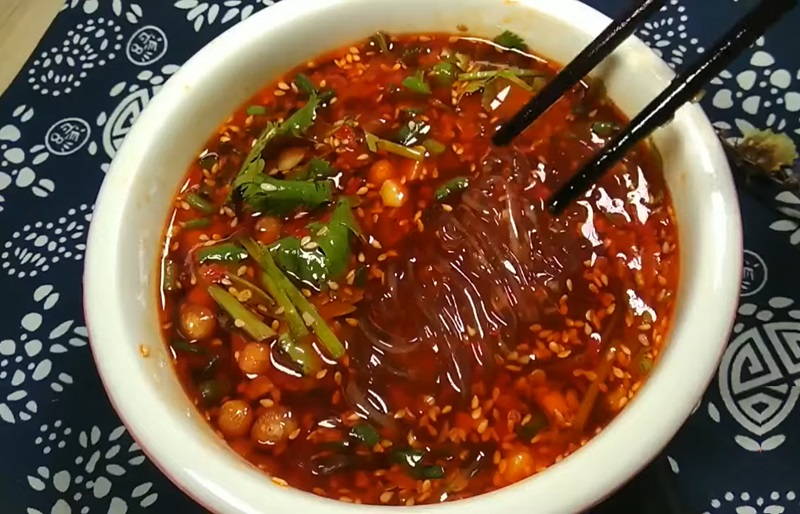
Hot and sour noodles, hailing from Sichuan, China, are a popular delicacy in Sichuan cuisine. Crafted from starch derived from peas, potato, sweet potato, or rice, these noodles boast a unique flavor profile, blending the sourness of Chinese rice vinegar with the heat of chili pepper oil. Ground toasted peanuts and soybeans add a delightful crispiness. Beyond rice vinegar, chili oil, and peanuts/soybeans, the dish incorporates sugar, salt, soy sauce, scallion pieces, and smashed garlic. The preparation is quick and straightforward—noodles are boiled, then combined with a mixture of rice vinegar, soy sauce, salt, sugar, and chili oil in a bowl. Garnished with peanuts or soybeans and scallion pieces, this dish offers a harmonious blend of flavors and textures.
Hui Mian
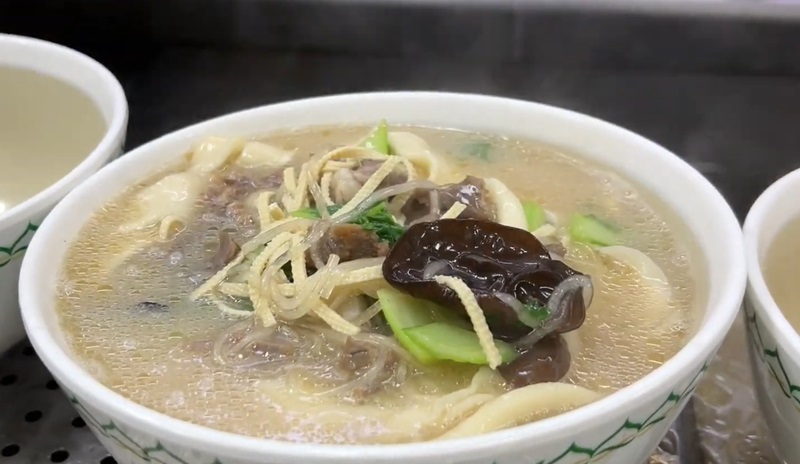
Hui Mian, a noodle soup originating from Henan, features diverse ingredients that vary between cities and eateries. Typically, it includes lamb bones, Chinese herbs like lycium chinense and star anise, and common additions such as kelp, tofu, coriander, quail eggs, chili oil, sugar, garlic, and minced peppers. The noodles, known for their soft, delicate, and chewy texture, are kneaded repeatedly during preparation for enhanced chewiness. Hui Mian's seasoning imparts a unique spicy and fragrant flavor, appetizing and slightly robust without excessive saltiness or greasiness, rendering it a healthy delicacy. Cooking for a minimum of five hours results in a distinctive milky white broth. Personalized ingredient choices, such as tofu, vegetables, chicken, or beef, can be added to suit individual preferences when enjoying Hui Mian.
Satay bee hoon
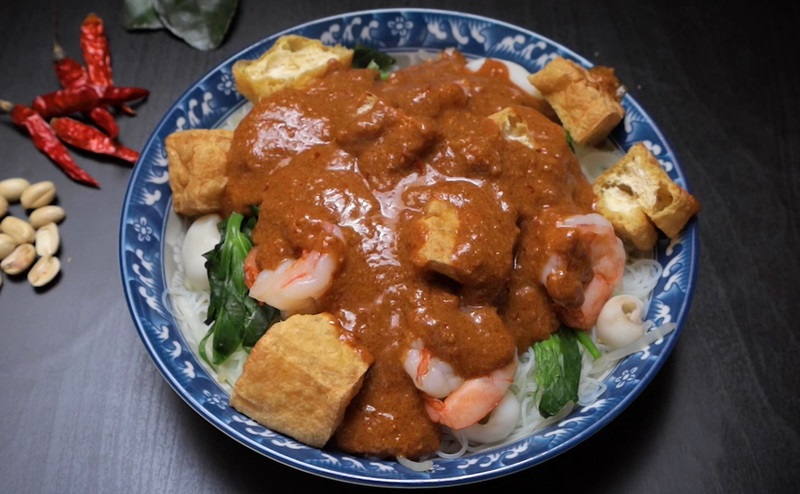
Satay bee hoon is a popular Chinese noodle dish that originates from Singapore. This delectable dish is a harmonious blend of Chinese and Malay flavors, resulting in a unique and satisfying culinary experience. The star of the dish is the bee hoon, which refers to thin rice vermicelli noodles. These noodles are soaked in a flavorful and aromatic satay sauce, made from ground peanuts, spices, and a variety of herbs. The sauce is creamy, slightly spicy, and has a rich nutty taste that complements the noodles perfectly. To enhance the dish, various ingredients are added, creating layers of texture and flavors. These ingredients typically include succulent slices of chicken or pork, plump shrimp or seafood, crisp bean sprouts, crunchy vegetables like cabbage and carrots, and chewy tofu. The dish is often garnished with fresh coriander, chopped peanuts, and a squeeze of lime juice to add a refreshing tang.
Noodles with Tomato Egg Sauce
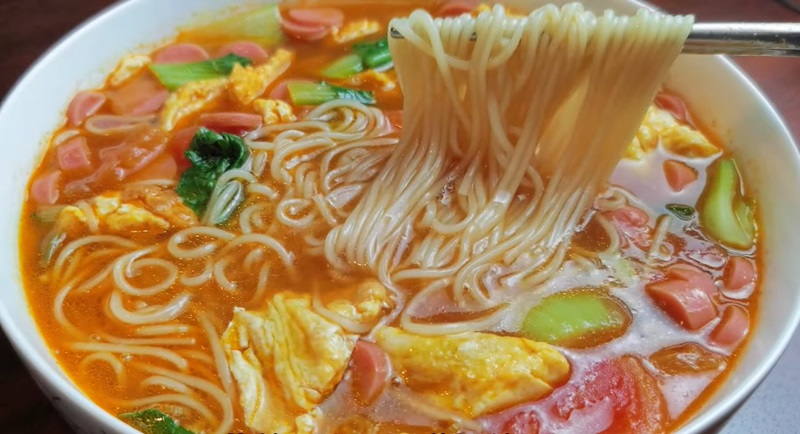
Noodles with tomato egg sauce is a popular and delicious dish that combines the rich flavors of ripe tomatoes and savory eggs with the satisfying texture of noodles. The dish typically starts with thin, long noodles that are cooked until they are tender yet still slightly chewy. To prepare the tomato egg sauce, ripe tomatoes are first blanched to remove the skin and then pureed into a smooth sauce. The sauce is then cooked with onions, garlic, and a touch of soy sauce to enhance the flavors. Eggs are beaten and slowly poured into the simmering sauce, creating delicate ribbons of cooked egg that add both texture and protein to the dish. Once the sauce is ready, the cooked noodles are added and gently tossed to coat them evenly. The result is a harmonious combination of tangy tomato flavors, the richness of the eggs, and the satisfying chewiness of the noodles.
Shacha Noodles
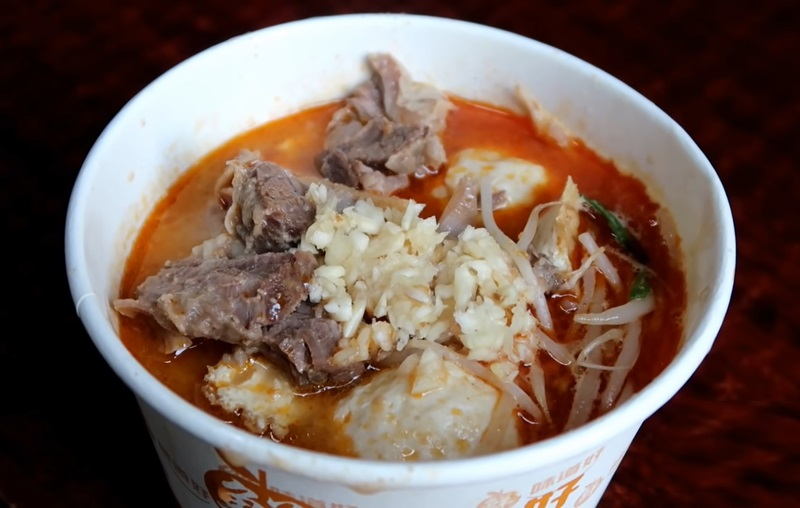
Shacha Noodles, also known as sate or satay noodles, is a noodle dish popular in southern Fujian province. It is a kind of soup noodles made by cooking satay soup made from satay sauce and adding bean sprouts, pork liver, and other auxiliary materials. The common and main ingredients of shacha noodle are shacha sauce, oil noodles, beansprouts and water. Other ingredients can be added for flavor such as fried tofu or shrimp.
Su-style noodles
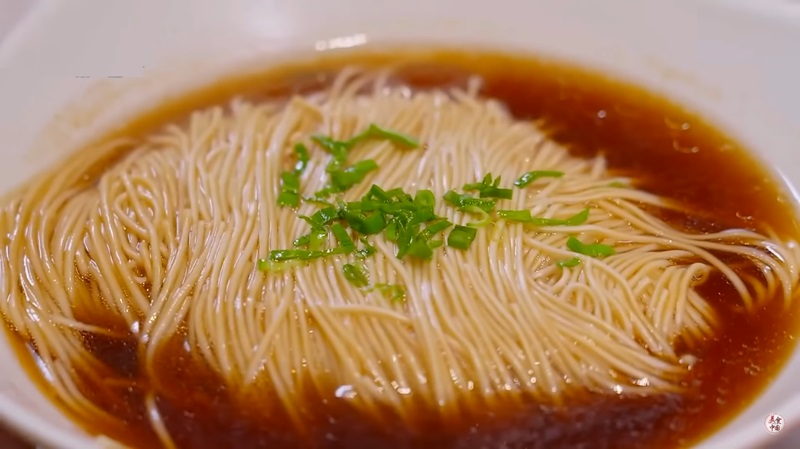
Su-style noodle, a cherished dish in Suzhou, China, harmoniously blends soup, noodles, and an array of delectable toppings. The soup comes in two variations: red soup and white soup, both originating from a slowly cooked base, with ingredients like eel bone, green shell snail, pork bone, chicken, pork, or ham, depending on the restaurant. The addition of brine, in a 10:1 ratio, transforms the white soup into the flavorful red soup. Toppings for Su-style noodles include braised duck, common braised eel meat, stir-fried meat, pork ribs, shrimps, and a medley of stir-fried vegetables, adding layers of taste and texture to this traditional Suzhou delight.




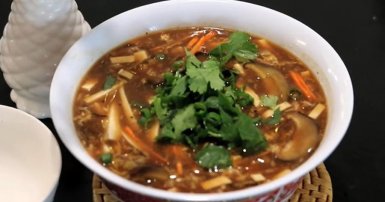
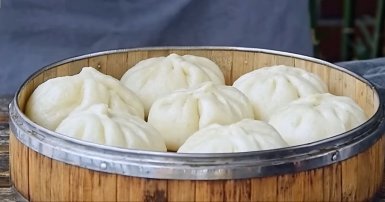

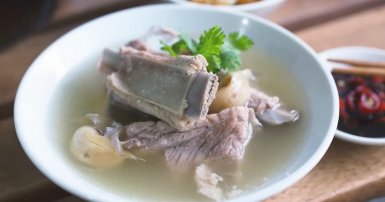


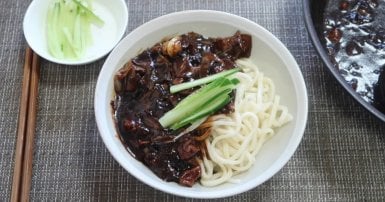


-1709813013.jpg)


